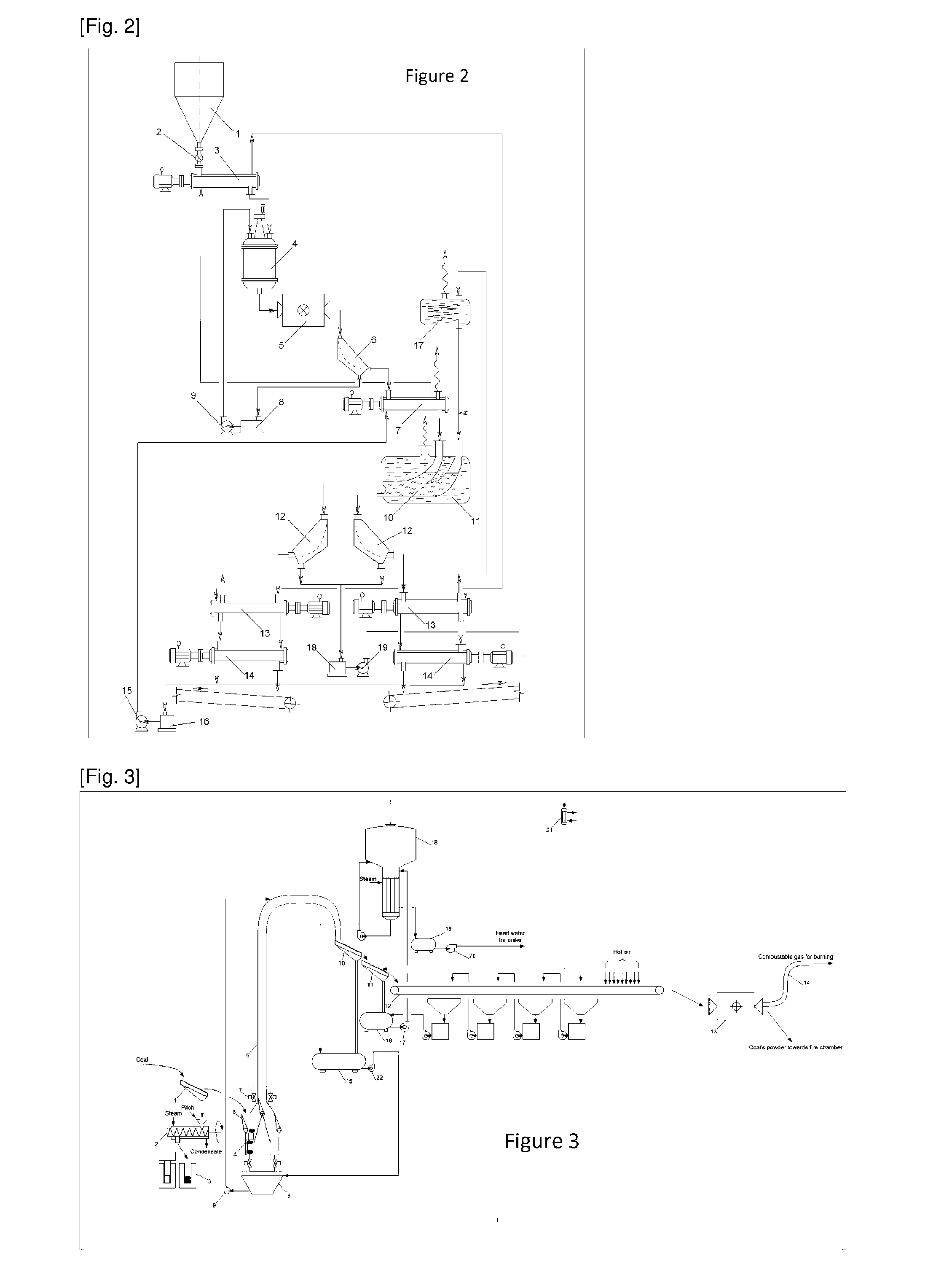Method of mineral fuel beneficiation with subsequent delivery to the consumer by pipeline transportation
a mineral fuel and pipeline transportation technology, applied in the direction of fuels, transportation and packaging, light and heating equipment, etc., can solve the problems of losing consumer properties, calorific value, and inability to store out of doors for as long
- Summary
- Abstract
- Description
- Claims
- Application Information
AI Technical Summary
Benefits of technology
Problems solved by technology
Method used
Image
Examples
example 1
[0058]FIG. 1 shows the flow diagram of underground treatment process of the initial rock portion that requires additional size reduction under deep mining conditions, where the rock remains sufficiently heated by heat of interior the whole year round, irrespective of meteorological conditions, and when the coal produced is intended for a power plant.
[0059]This portion of initial rock separated by screening and requiring additional size reduction to improve waste rock separation is ground in rattler 1 flooded with liquid whose density is intermediate between those of fossil fuel and rock refuse. The rattler operates in closed cycle with three-product heavy-media hydrocyclone 2.
[0060]Liquid represents an aqueous solution of calcium nitrate / zinc chloride mixture having a density of 1.48 g / cm3.
[0061]The beneficiated product, leaving hydrocyclone 2 remains suspended in heavy aqueous medium, which first brings the product to a pitbottom, and then by pump 3 and ground pumping stations (not...
example 2
[0073]FIG. 2 shows the flow diagram of underground beneficiation of powder-like mass resisting highly selective dry separation. Treating this part of raw material in aqueous solutions of mineral salts results in the reduction of separation efficiency due to increased effect of water-salt medium rheological characteristics on highly dispersed material, while, a high humidity of paste-like beneficiation products leads to the increase of power consumption associated with the discharge of dry coal and dry final tails.
[0074]In this case, liquid argon, non-aqueous cryogenic liquid with a density intermediate between those of fossil fuel and rock refuse, is used as a separating medium. The boiling point of this liquid is so low that the discharge of dry beneficiation products takes place automatically due to irreversible boiling-up of liquid phase residues due to contact with the environment.
[0075]To this end, initial powder-like run-of-mine coal is fed from bin 1 through gate 2 to recuper...
example 3
[0086]On FIG. 3 is represented the basic technological scheme of joint delivery lumpy and powdery coal from mine on surface in case the consumer of such firm fuel is the thermal power station.
[0087]Coal delivered in main stream from mining faces to the shaft bottom is classified on separator 1 into lumpy material and fines comprising both fine pieces of coal and all its dusty fractions.
[0088]Coal fines separated from lumps and large pieces are fed by screw feeder 2 equipped with a heat-exchange jacket to press mold 3 for pressing. A moderate amount of pitch is introduced into screw feeder 2 as a binding additive, which strengthens monolithic blocks made from coal fines in the form of cylindrical bodies resembling pistons of hydraulic facilities by their shape. Steam for heating coal mixture with pitch before pressing is fed into its heat-exchange jacket.
[0089]Batches of lumpy coal and coal blocks apiece are alternately arranged in loading chamber 4 of the loading system of transport...
PUM
| Property | Measurement | Unit |
|---|---|---|
| Temperature | aaaaa | aaaaa |
| Concentration | aaaaa | aaaaa |
| Density | aaaaa | aaaaa |
Abstract
Description
Claims
Application Information
 Login to View More
Login to View More - R&D
- Intellectual Property
- Life Sciences
- Materials
- Tech Scout
- Unparalleled Data Quality
- Higher Quality Content
- 60% Fewer Hallucinations
Browse by: Latest US Patents, China's latest patents, Technical Efficacy Thesaurus, Application Domain, Technology Topic, Popular Technical Reports.
© 2025 PatSnap. All rights reserved.Legal|Privacy policy|Modern Slavery Act Transparency Statement|Sitemap|About US| Contact US: help@patsnap.com



